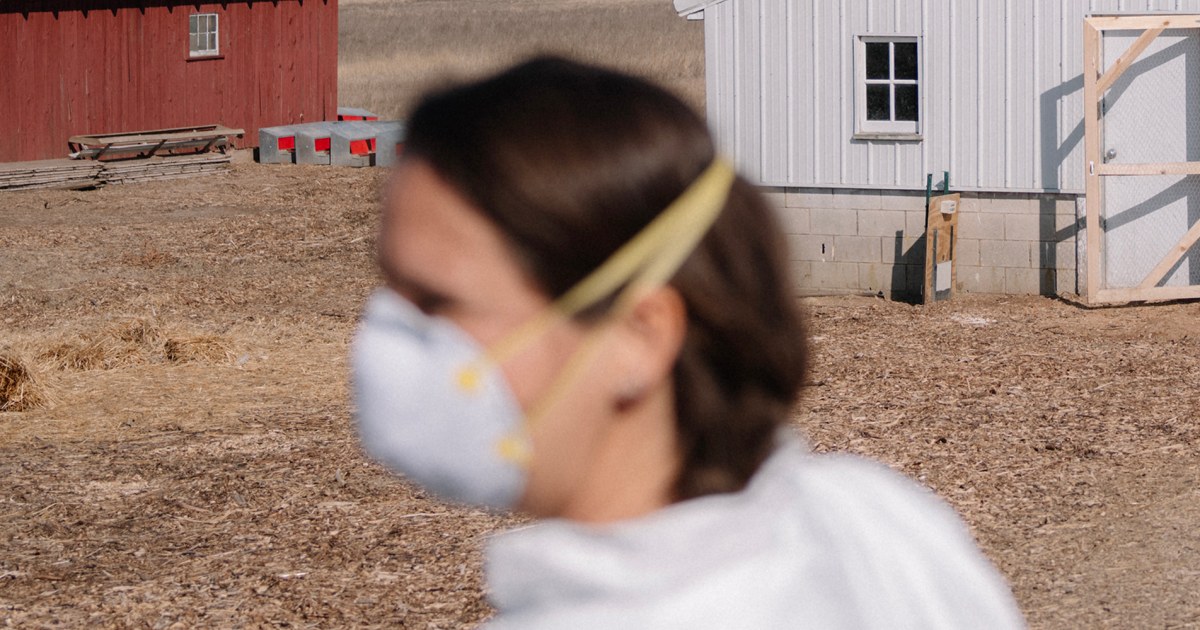Bird Flu: One Farm's Devastating Loss Highlights Growing Avian Influenza Threat
Avian influenza, or bird flu, continues to pose a significant threat to the poultry industry and global food security. The recent devastating outbreak at Miller Farms in Iowa serves as a stark reminder of the economic and emotional toll this highly contagious disease can inflict. This article delves into the specifics of Miller Farms' experience, explores the wider implications of the outbreak, and examines preventative measures crucial for protecting poultry flocks.
The Miller Farms Tragedy: A Case Study in Bird Flu Devastation
Miller Farms, a family-owned operation for over three generations, recently suffered a complete loss of its entire flock of 25,000 laying hens due to a highly pathogenic strain of H5N1 avian influenza. The rapid spread of the virus within the barn left the farm with no viable option but to euthanize the entire flock to prevent further spread. This devastating loss resulted in significant financial hardship for the family, impacting not only their immediate income but also their long-term viability.
The Impact Beyond the Farm Gate
The consequences of the outbreak extend beyond Miller Farms. The loss of 25,000 laying hens contributes to a regional egg shortage, driving up prices for consumers. Moreover, the incident necessitates extensive biosecurity measures to prevent the spread to other poultry farms in the area, causing disruptions to the supply chain and impacting neighboring businesses.
- Economic Losses: The financial strain on Miller Farms is considerable, encompassing the cost of the birds, lost revenue, disposal fees, and the expenses associated with cleaning and disinfecting the premises.
- Emotional Toll: Beyond the economic hardship, the emotional toll on the Miller family is immense. Years of dedication and hard work have been wiped out in a matter of days, leaving them facing an uncertain future.
- Public Health Concerns: While the risk of H5N1 transmission to humans remains low, stringent biosecurity measures are essential to minimize any potential threat.
Understanding Avian Influenza (Bird Flu)
Avian influenza is caused by type A influenza viruses that naturally infect birds. Several subtypes exist, with some highly pathogenic (HP) strains causing severe disease and high mortality rates in poultry. The H5N1 subtype is currently a significant concern globally.
Transmission and Symptoms
The virus spreads primarily through direct contact with infected birds or their droppings. Symptoms in poultry can vary depending on the strain and include:
- Respiratory distress: Coughing, sneezing, and difficulty breathing.
- Neurological signs: Weakness, tremors, and paralysis.
- Reduced egg production: Significant drop in egg laying.
- Sudden death: High mortality rates are characteristic of highly pathogenic strains.
Preventing Future Outbreaks: A Call for Proactive Measures
Preventing future outbreaks of avian influenza requires a multi-pronged approach encompassing robust biosecurity measures, early detection, and rapid response protocols.
- Enhanced Biosecurity: Strict hygiene practices, including disinfecting equipment and footwear, limiting access to poultry barns, and implementing proper waste management, are crucial.
- Early Detection and Surveillance: Regular monitoring of poultry flocks for signs of illness, coupled with swift reporting of suspected cases to animal health authorities, are essential.
- Vaccination: Vaccination programs can significantly reduce the impact of avian influenza outbreaks, though vaccine effectiveness can vary depending on the circulating strain.
- Governmental Support: Governmental support and resources are crucial for farmers affected by outbreaks, including financial assistance and technical expertise.
The experience of Miller Farms underscores the devastating impact of avian influenza on poultry farmers and the broader food system. Strengthening biosecurity measures, enhancing surveillance, and providing adequate support to affected farmers are critical steps in mitigating the risks posed by this highly contagious disease. The future of poultry farming hinges on a collaborative effort to prevent future outbreaks and protect both livelihoods and food security.
Call to Action: Learn more about avian influenza prevention and biosecurity measures from your local agricultural extension office or veterinary services. Together, we can strengthen our defenses against this ongoing threat.
